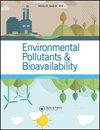施用有机肥对原油污染土壤中甘露甘露茎、根生物量产量及植物养分的影响
Q3 Chemical Engineering
引用次数: 4
摘要
原油污染土壤对甘露茎、根生物量产量及养分吸收的影响。研究了两种有机肥作为土壤改良剂的效果。这是为了评价试验植物在不同程度原油土壤污染下的生长响应。5个水平[0、2.5、5、10和20% (v/v)]的原油,每个水平重复3次,当12克罐- 1 COM时污染3公斤土壤;施用12g盆栽- 1氮肥强化堆肥(NCM)和对照、不施肥土壤(C)作为肥料处理。在无原油土壤污染和施用COM的条件下,平均鲜梢生物量产量为2.67 g。该值显著(p < 0.05)高于NCM组的2.05 g pot - 1和对照组的1.67 g pot - 1。此外,在原油土壤污染为零的情况下,施用COM的平均鲜根产量为4.02 g pot - 1。该值显著(p < 0.05)高于NCM组的2.41 g pot - 1和对照组的1.71 g pot - 1。干梢和根系生物量产量的变化规律相似。随着原油土壤污染程度的增加,麻豆茎、根产量显著降低(p < 0.05)。COM施肥提高了速效P、K和Na值,提高了麻豆对养分的吸收,特别是对N、P、Ca、Mg和Fe的吸收;并暗示了合理施用有机肥在原油污染土壤修复研究中的重要性。本文章由计算机程序翻译,如有差异,请以英文原文为准。
Organic fertilizer applications influence on the shoot and root biomass production and plant nutrient of Calopogonium mucunoides from crude oil-contaminated soils
The impact of crude oil-contaminated soil on the shoot and root biomass yield and nutrients uptake of Calopogonium mucunoides Desv. using two types of composted manure (COM) as soil amendments were investigated. This was with a view to assessing the growth response of the test plant under different levels of crude oil soil contamination. Five levels [0, 2.5, 5, 10, and 20% (v/v)] of crude oil, each was replicated thrice to contaminate 3 kg of soil when 12 g pot−1 COM; 12 g pot−1 neem-fortified composted manure (NCM) and control, soil without manure application (C) were imposed as manure treatments. The mean fresh shoot biomass yield at zero crude oil soil contamination and with COM application was 2.67 g pot−1. This value was significantly (p < 0.05) higher than 2.05 g pot−1 for NCM and 1.67 g pot−1 for the control. Also, the mean fresh root yield at zero crude oil soil contamination with COM application was 4.02 g pot−1. This value was significantly (p < 0.05) higher than 2.41 g pot−1 for NCM and 1.71 g pot−1 for the control. The dry shoot and root biomass yield followed similar pattern. The shoot and root yield of C. mucunoides significantly (p < 0.05) reduced with increase in crude oil soil contamination. The nutrients uptake of C. mucunoides, particularly N, P, Ca, Mg, and Fe, were enhanced with COM fertilization having higher available P, K, and Na values; and by implication, suggesting the importance of adequately formulated composted manure usage in the rehabilitation studies of crude oil-contaminated soil.
求助全文
通过发布文献求助,成功后即可免费获取论文全文。
去求助
来源期刊
CiteScore
1.62
自引率
0.00%
发文量
0
审稿时长
1 months
期刊介绍:
Chemical Speciation & Bioavailability ( CS&B) is a scholarly, peer-reviewed forum for insights on the chemical aspects of occurrence, distribution, transport, transformation, transfer, fate, and effects of substances in the environment and biota, and their impacts on the uptake of the substances by living organisms. Substances of interests include both beneficial and toxic ones, especially nutrients, heavy metals, persistent organic pollutants, and emerging contaminants, such as engineered nanomaterials, as well as pharmaceuticals and personal-care products as pollutants. It is the aim of this Journal to develop an international community of experienced colleagues to promote the research, discussion, review, and spread of information on chemical speciation and bioavailability, which is a topic of interest to researchers in many disciplines, including environmental, chemical, biological, food, medical, toxicology, and health sciences.
Key themes in the scope of the Journal include, but are not limited to, the following “6Ms”:
Methods for speciation analysis and the evaluation of bioavailability, especially the development, validation, and application of novel methods and techniques.
Media that sustain the processes of release, distribution, transformation, and transfer of chemical speciation; of particular interest are emerging contaminants, such as engineered nanomaterials, pharmaceuticals, and personal-care products.
Mobility of substance species in environment and biota, either spatially or temporally.
Matters that influence the chemical speciation and bioavailability, mainly environmentally relevant conditions.
Mechanisms that govern the transport, transformation, transfer, and fate of chemical speciation in the environment, and the biouptake of substances.
Models for the simulation of chemical speciation and bioavailability, and for the prediction of toxicity.
Chemical Speciation & Bioavailability is a fully open access journal. This means all submitted articles will, if accepted, be available for anyone to read, anywhere, at any time. immediately on publication. There are no charges for submission to this journal.

 求助内容:
求助内容: 应助结果提醒方式:
应助结果提醒方式:


